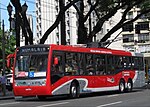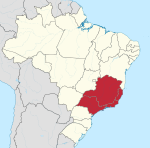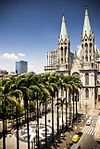Solar da Marquesa de Santos

The Solar da Marquesa de Santos is a manor house located in central São Paulo, Brazil, that hosts several cultural exhibitions and is currently the headquarters of the Cidade de São Paulo museum. The residence, made of rammed earth blocks, was built around the second half of the 18th century. Between 1834 and 1867, the building served as a home for Domitila de Castro, Marchioness of Santos, who acquired the property from the heiress of Brigadier Joaquim de Moraes Leme after the break in her relations with Pedro I of Brazil.In 1880, it was put up for auction and bought by the Diocesan Mitra, which installed the Episcopal Palace there. The entity carried out several works on the site, resulting in modifications to the structure.Between 1909 and 1967, the building was used by the São Paulo Gaz Company, which made other changes in the building until it was expropriated by the City Hall. In 1971, the manor was declared a historical monument of the State of São Paulo and named a municipal heritage. In 1975, it became the headquarters of the Municipal Secretary of Culture.Because of the many changes in its structure, the building had to undergo two restorations, the first in the 1960s and the second in 1990. The second floor still preserves the original walls of rammed earth and wattle and daub from the 18th century.
Excerpt from the Wikipedia article Solar da Marquesa de Santos (License: CC BY-SA 3.0, Authors, Images).Solar da Marquesa de Santos
Beco do Pinto, São Paulo Glicério
Geographical coordinates (GPS) Address External links Nearby Places Show on map
Geographical coordinates (GPS)
| Latitude | Longitude |
|---|---|
| N -23.54856 ° | E -46.63214 ° |
Address
Solar da Marquesa de Santos
Beco do Pinto
01017-010 São Paulo, Glicério
São Paulo, Brazil
Open on Google Maps










